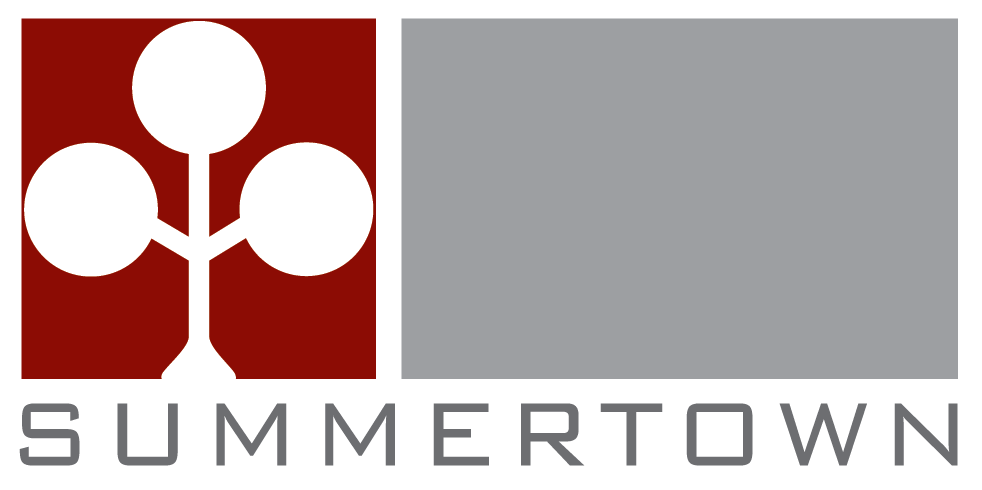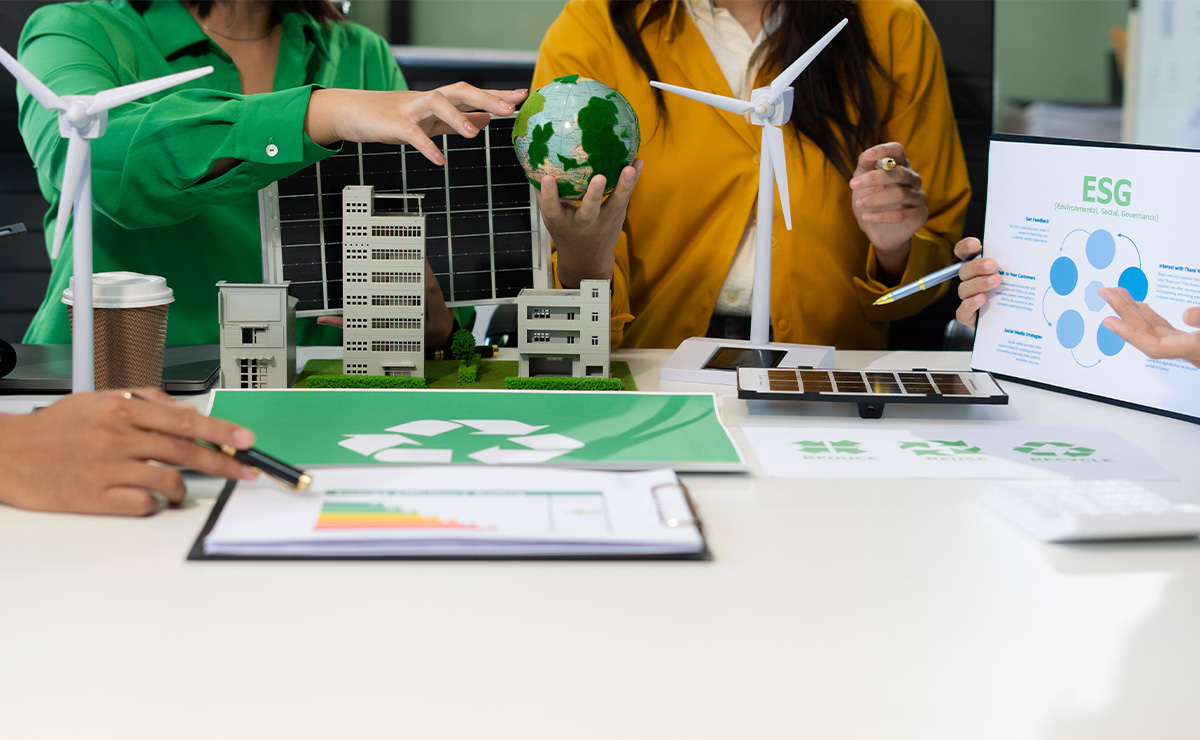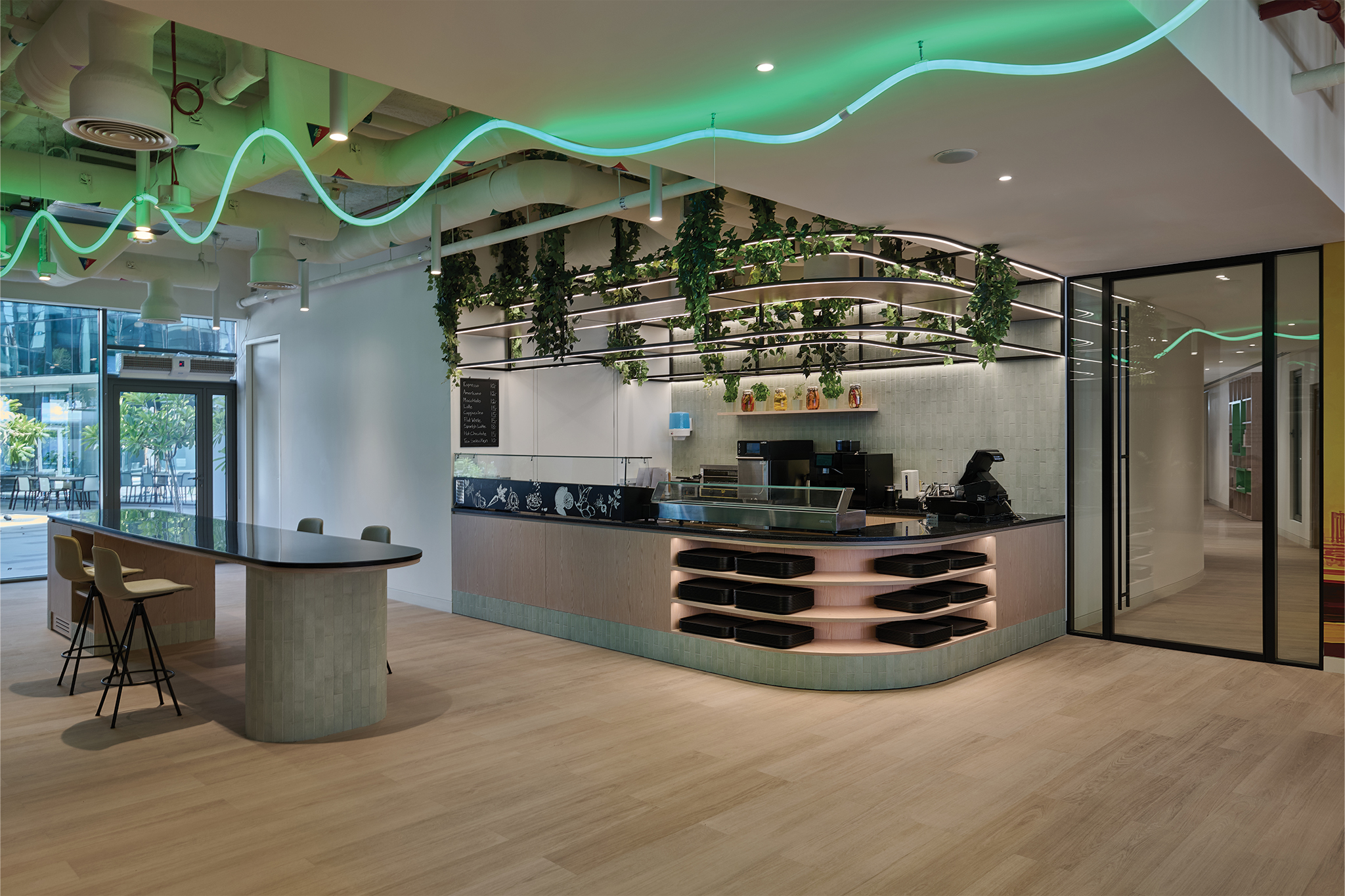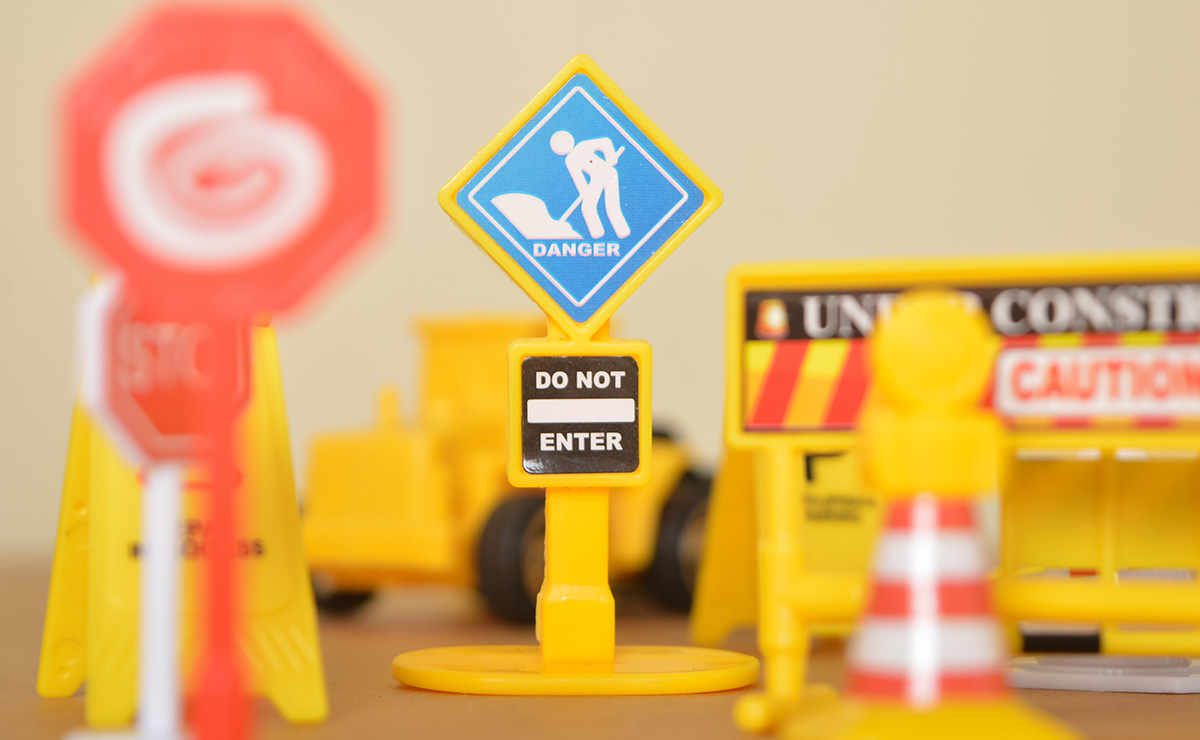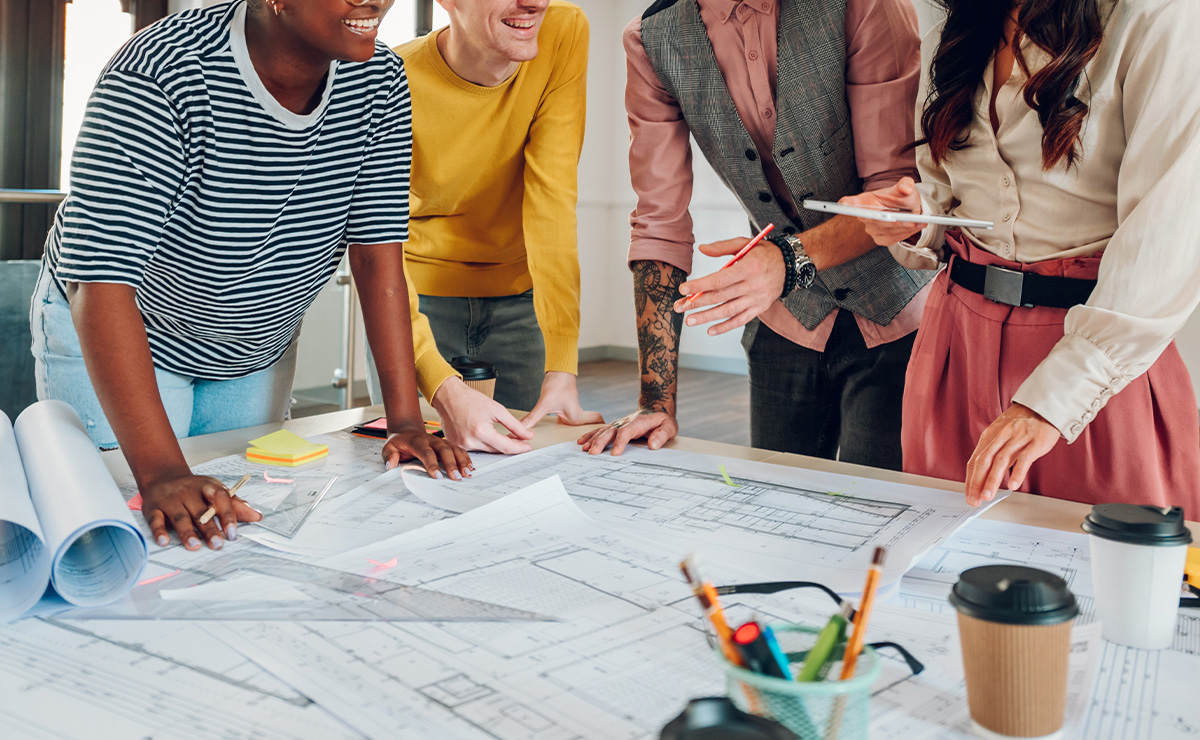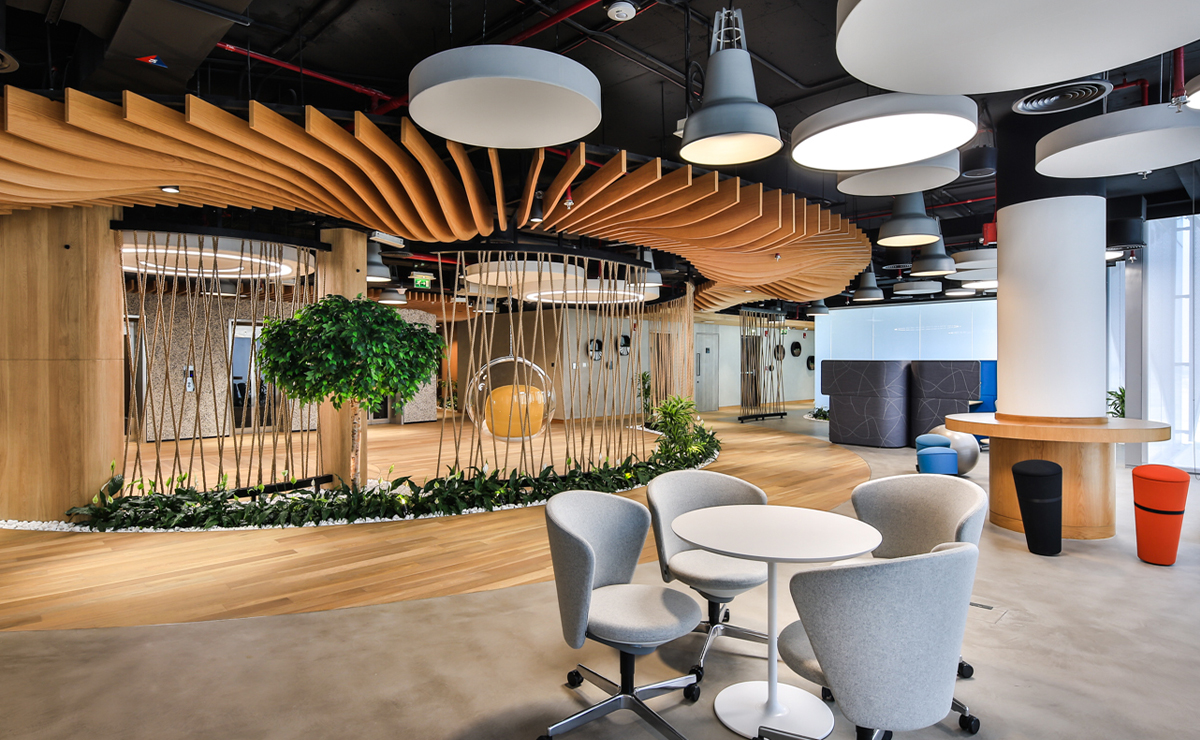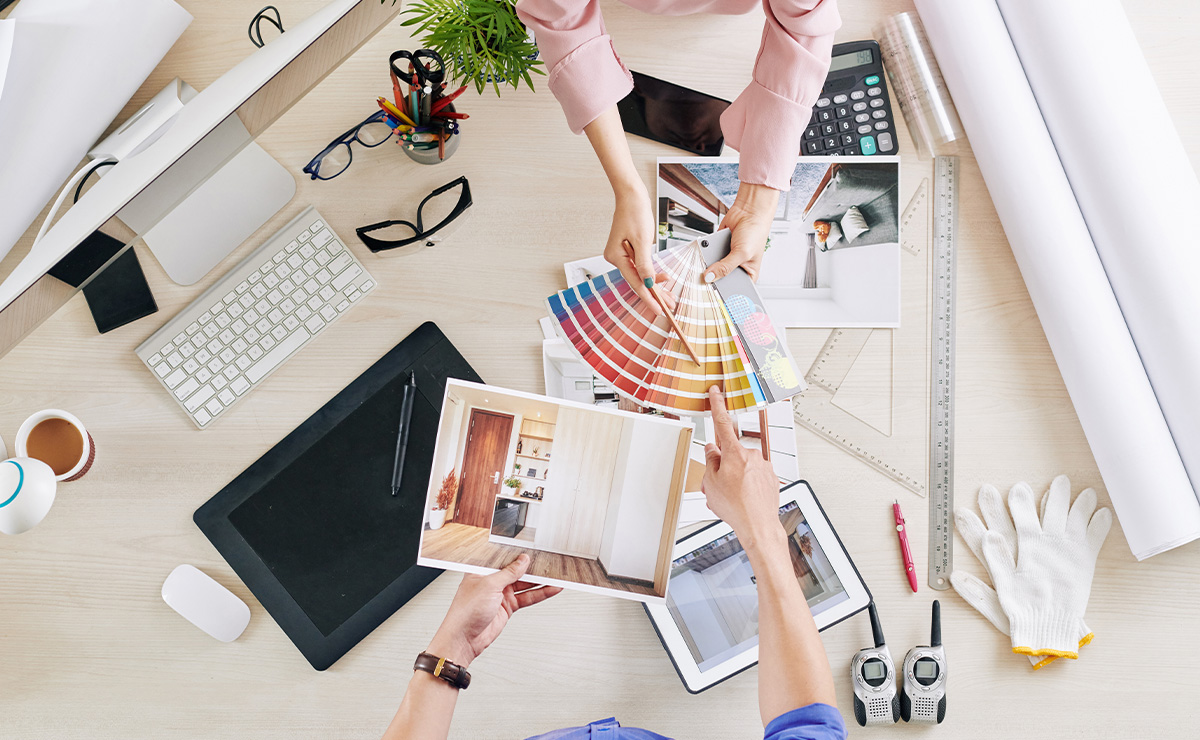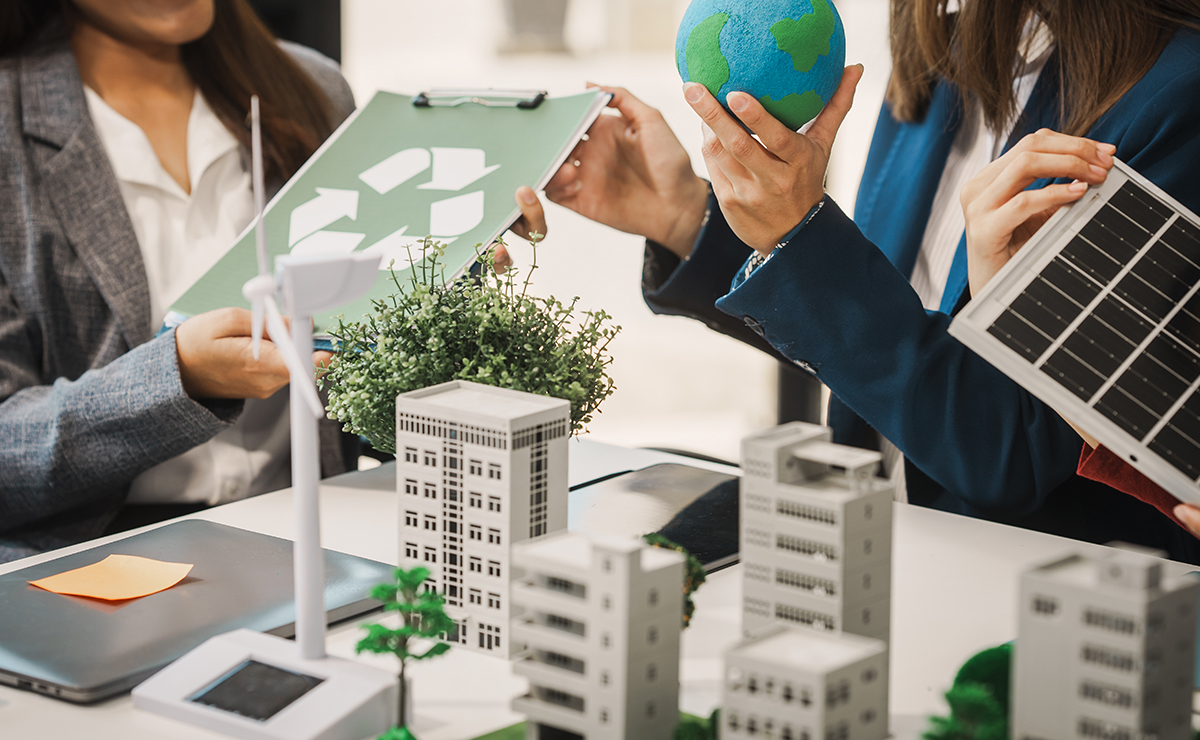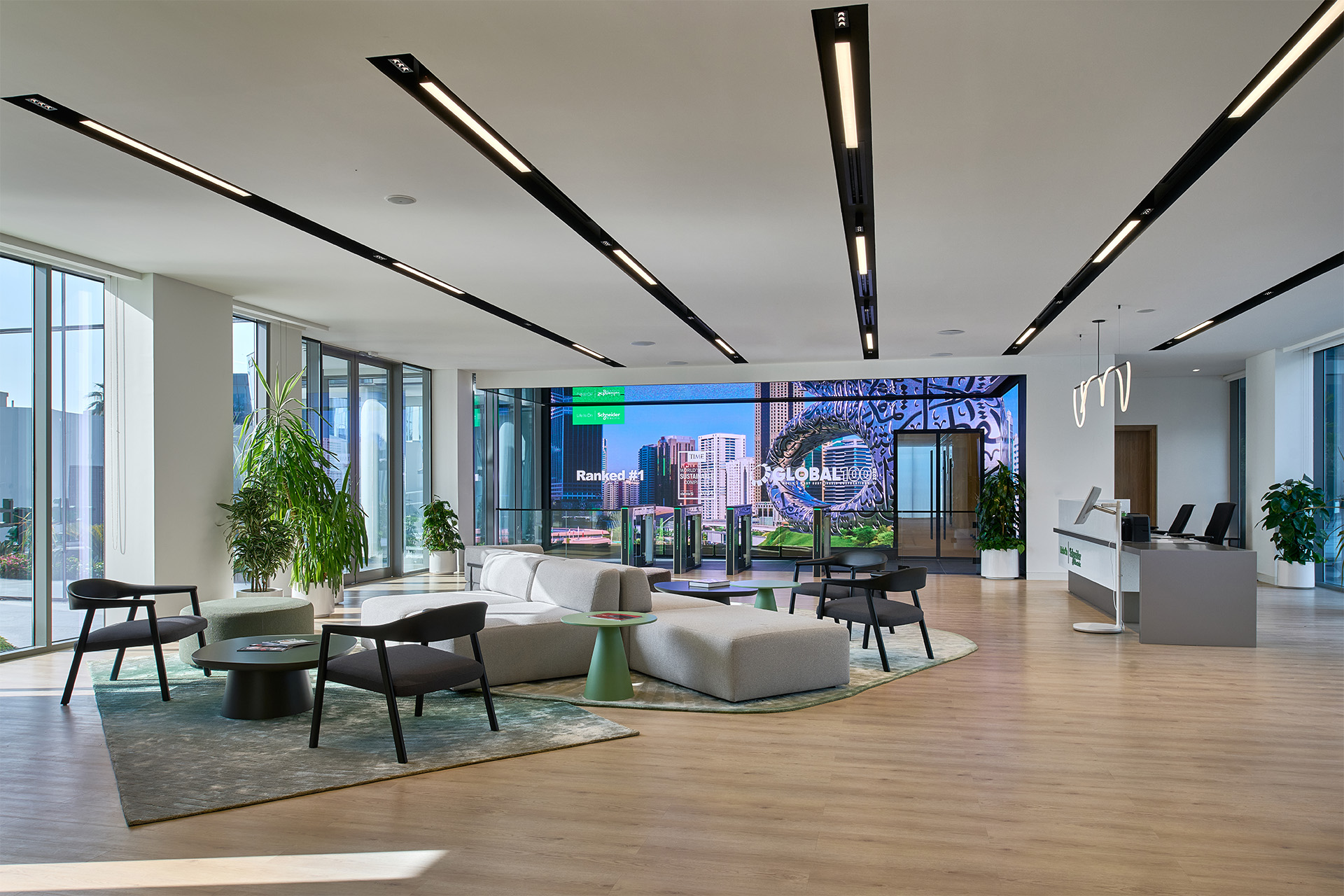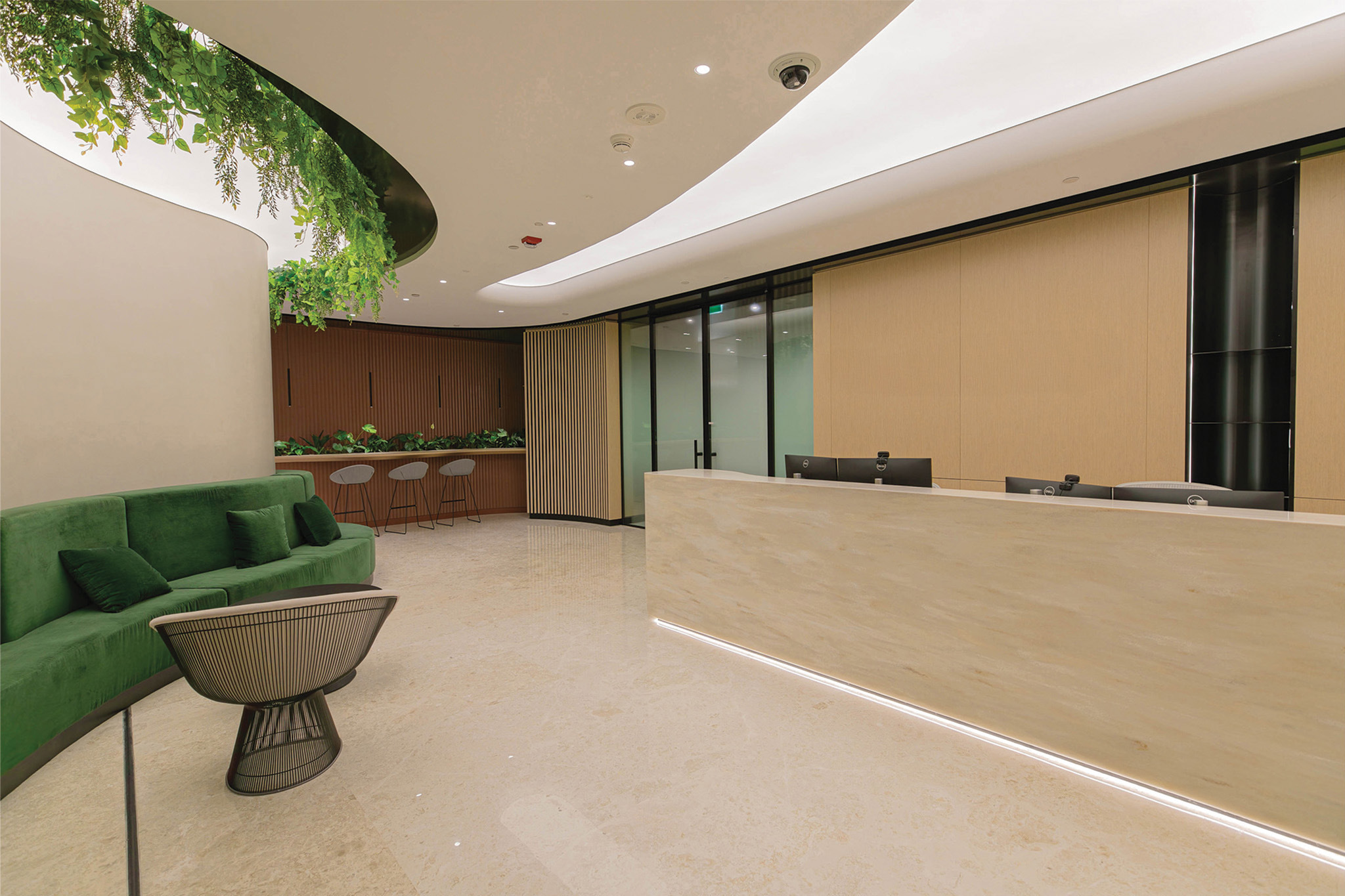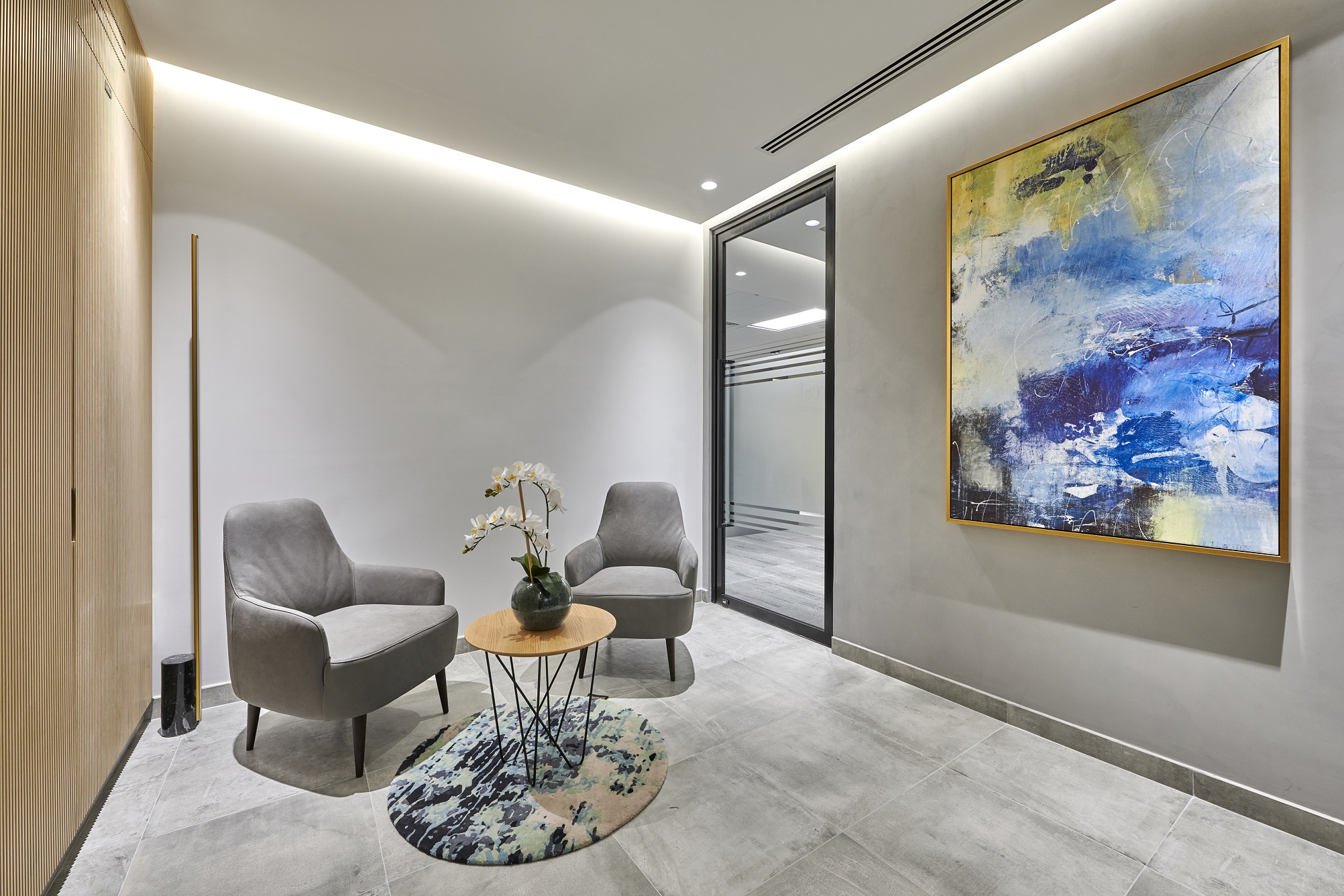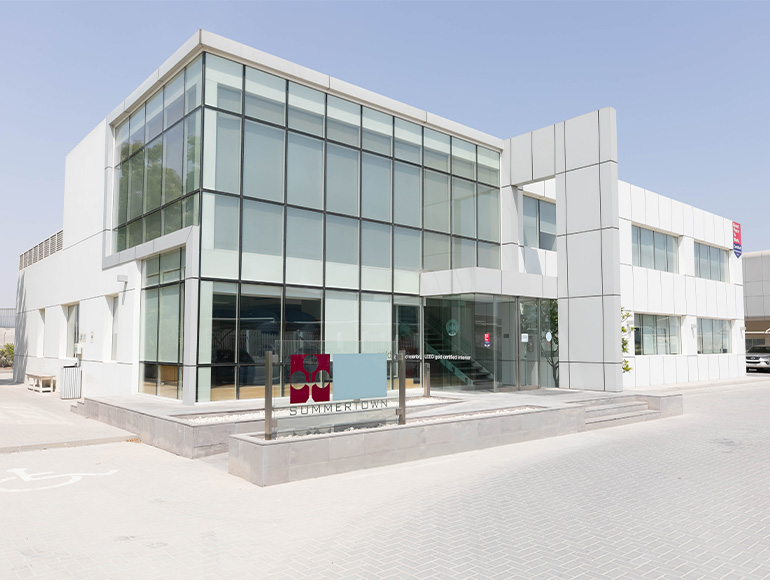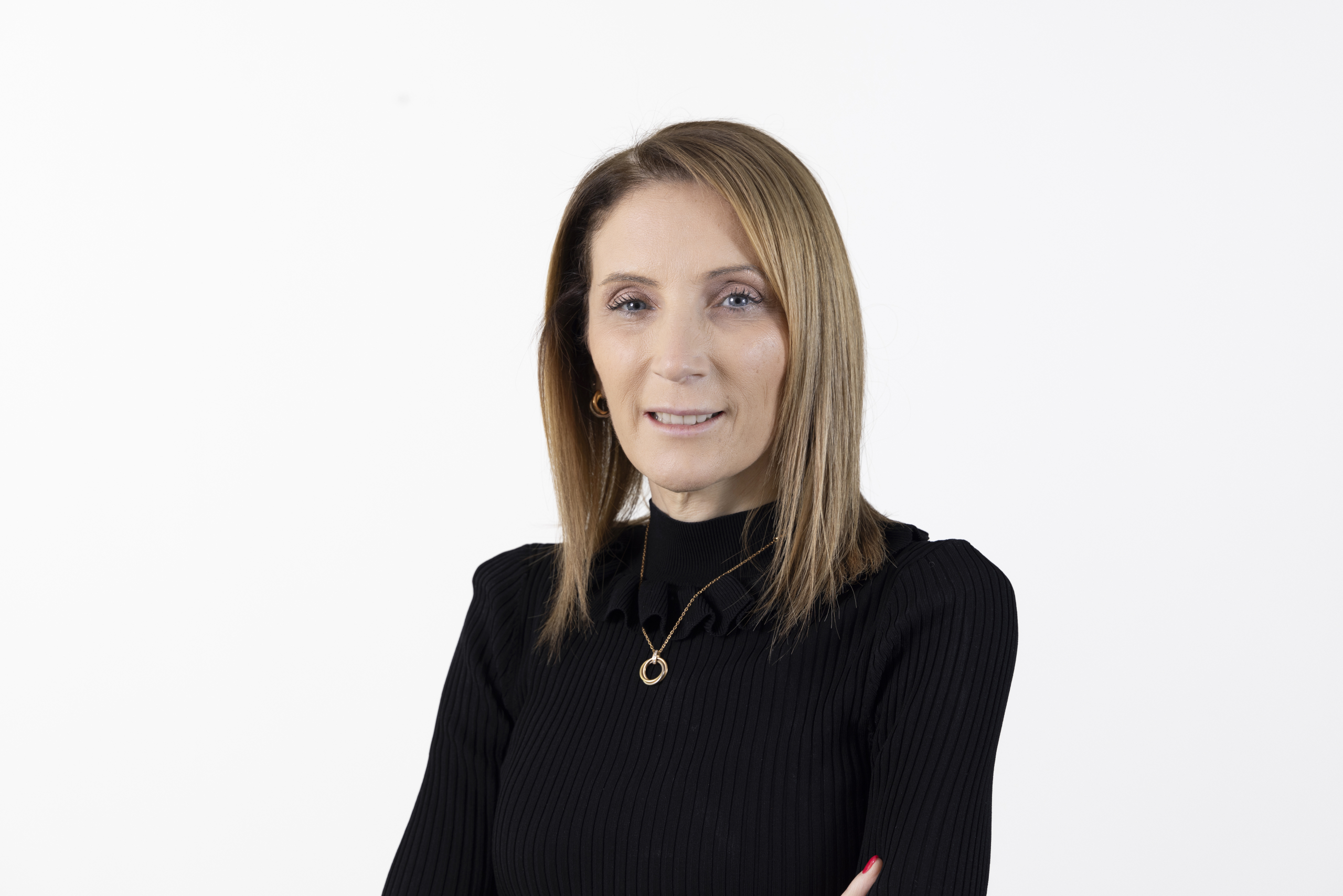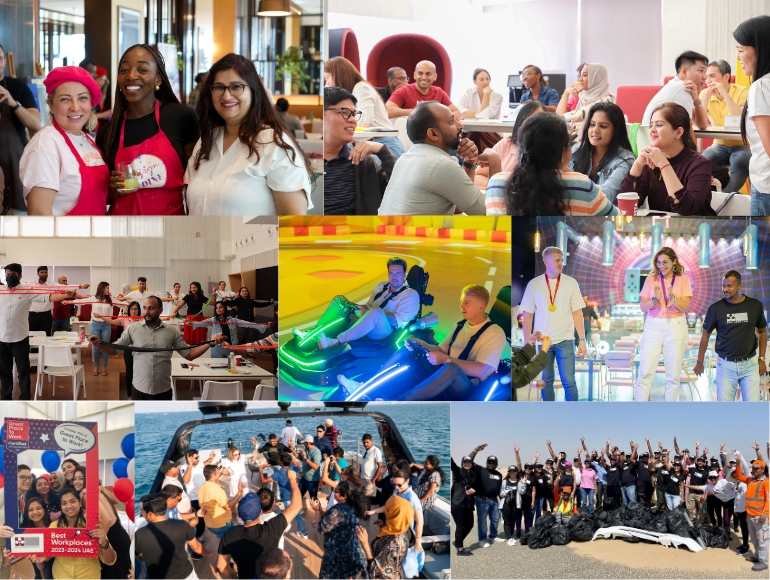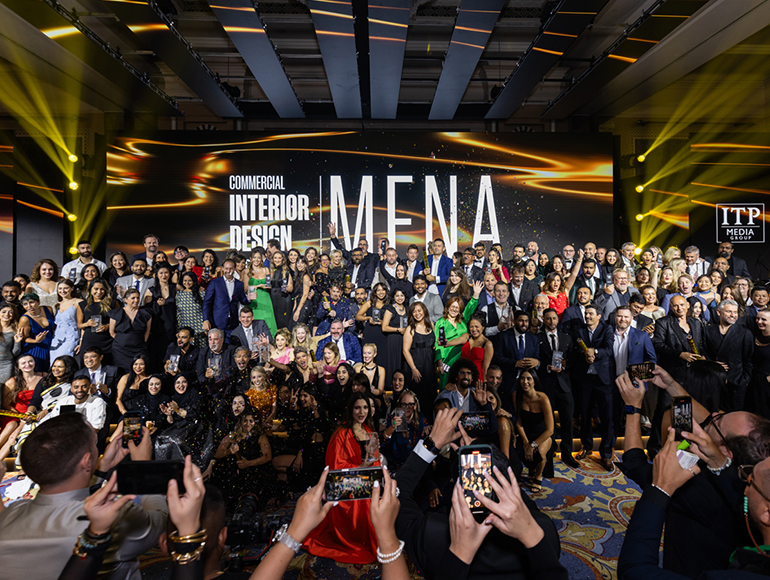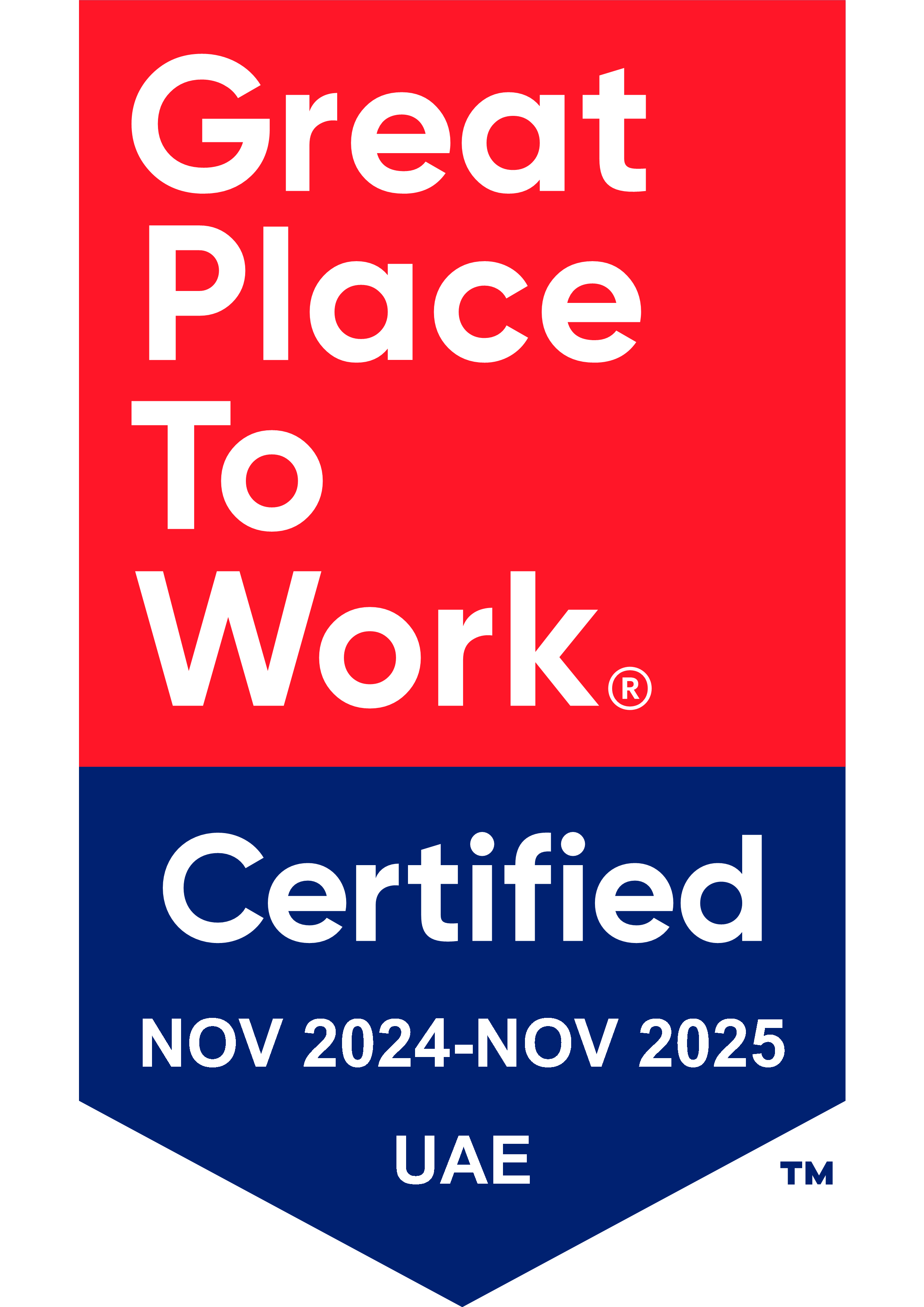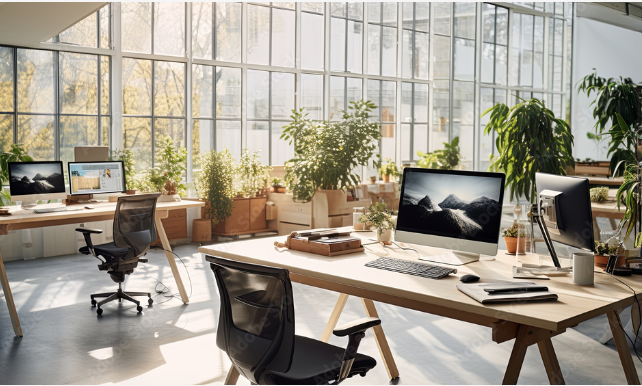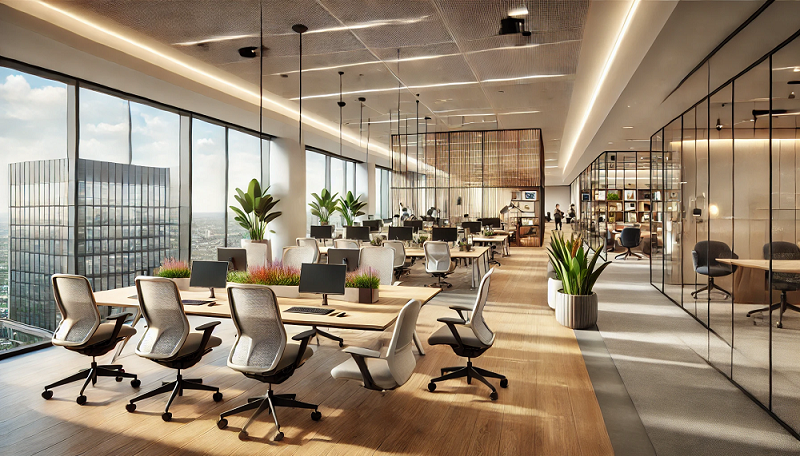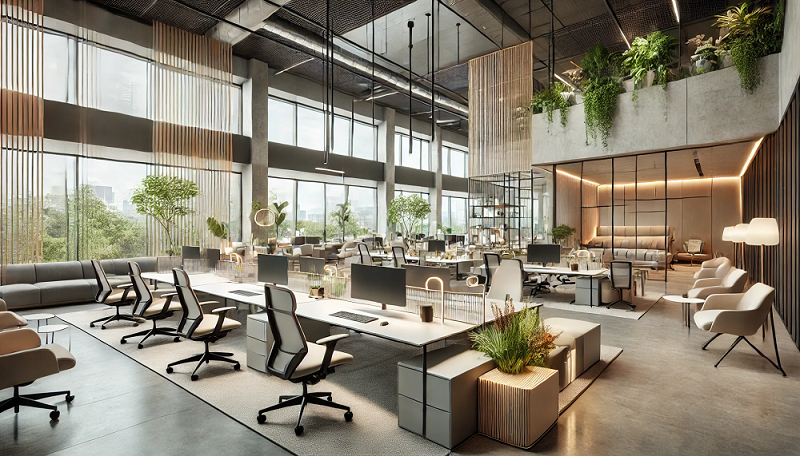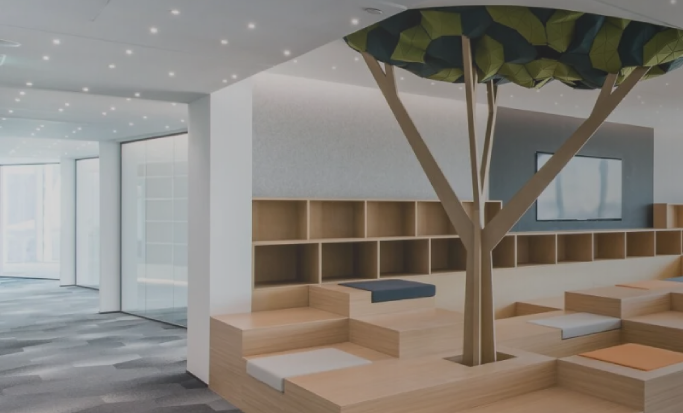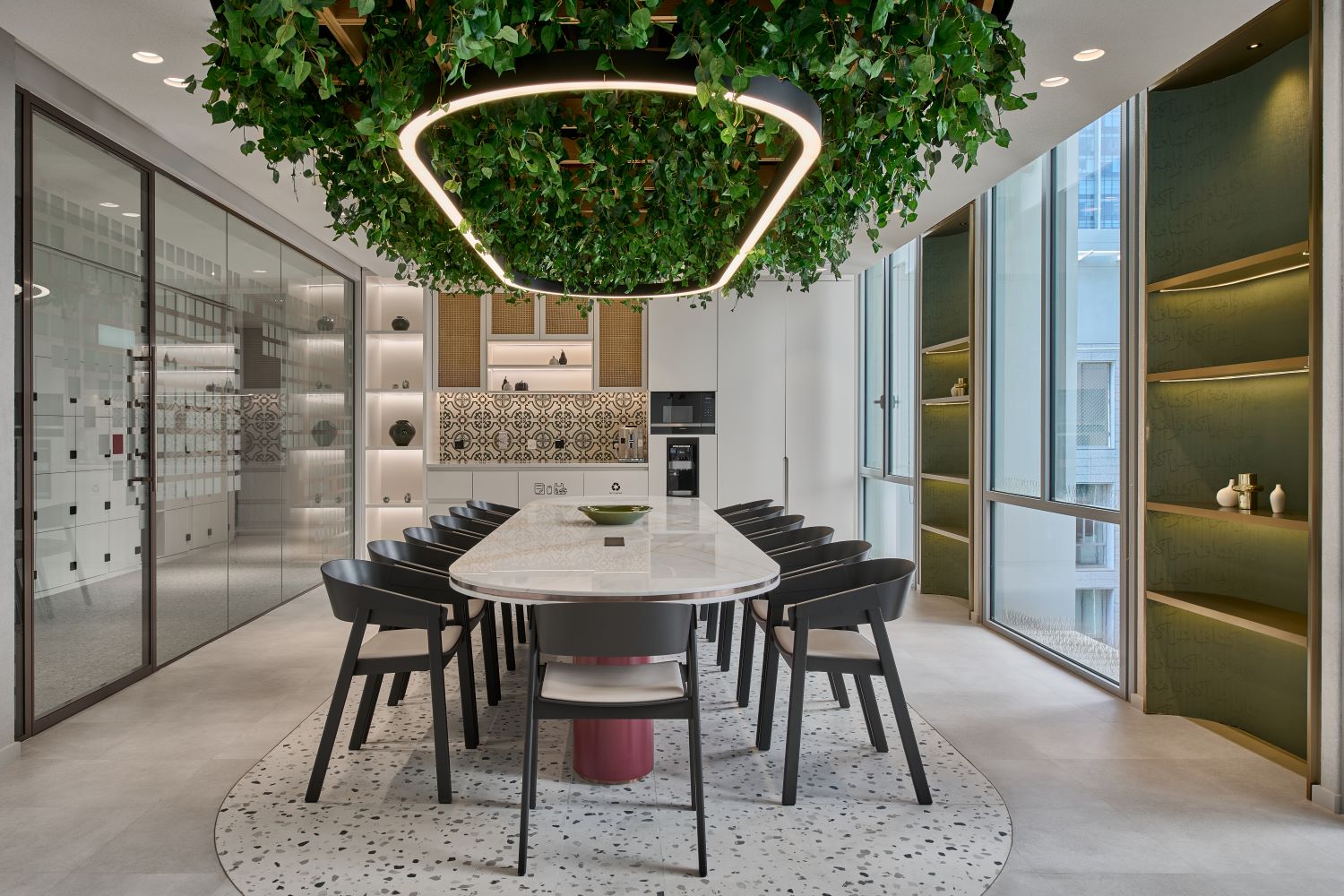
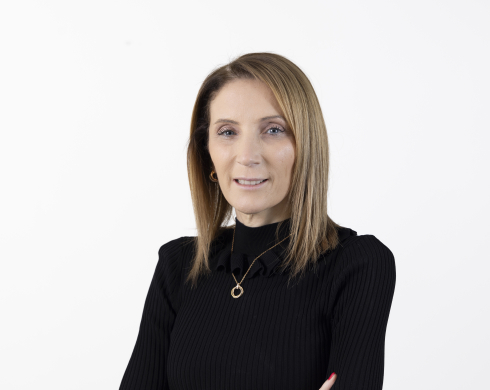
Nicola Trivett
General Manager & Sustainability Leader
Modern workplaces are more than functional spaces – they shape how people feel, how teams perform, and how companies meet their environmental responsibilities. As the UAE charges towards Net Zero 2050, the shift towards sustainable workplaces and responsible commercial fit outs in Dubai is no longer just an option; it’s a strategic imperative for businesses across every sector
However, today’s clients want more than a few token green touches. They expect work environments that support wellbeing, reduce carbon emissions, and meet global standards like LEED and WELL. This guide breaks down the materials and decisions that make that possible – and how expert fit out contractors in Dubai are turning sustainability goals into practical, high-performance interior solutions.
Certifications That Cut Through the Noise
In a market full of eco-claims and green labels, it’s easy to lose sight of what actually matters – especially when sustainability is part of your project brief. That’s where third-party certifications like LEED and WELL come in. They provide a clear framework for material selection, helping teams make decisions that are not just environmentally sound, but also aligned with global performance and wellbeing standards.
- LEED Certification offers a holistic framework, encouraging resource-efficient construction and healthier indoor environments. It’s the global benchmark for sustainable building – and well-understood by leading interior fit out companies in Dubai.
- WELL Certification shifts the focus from the environment to the people within it. Air quality, lighting, materials, and layout all contribute to human health. Materials aligned with WELL often overlap with LEED, creating a unified sustainability strategy.
Together, these certifications ensure materials meet clear, measurable standards – turning sustainability from a design intention into a deliverable. They give project teams a shared language and clients the confidence that every material choice supports both performance and accountability.
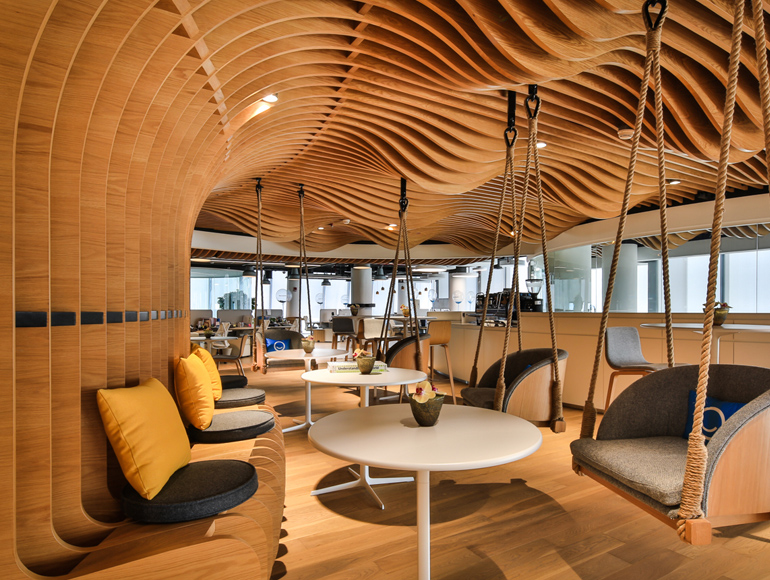
This LEED Gold project for Smart Dubai demonstrates how expert fit out contractors in Dubai integrate innovative technology with superior, thoughtfully selected materials for a high-performance space.
Circular Economy: Materials with Recycled and Renewable Content
Third-party certifications like LEED and WELL are clear about one thing: material sourcing matters. It’s not enough to install energy-efficient lighting or add a green wall – what goes into your floors, walls, and furniture needs to support lower embodied carbon, circularity, and ethical sourcing. That’s where recycled and rapidly renewable materials come in.
Recycled materials reduce the need for virgin resource extraction and help divert waste from landfill. Fit out contractors across Dubai are increasingly specifying materials such as reclaimed timber, recycled plastic partitions or furniture, and carpet tiles made from repurposed nylon. These materials come with lower embodied carbon and often meet LEED’s Material and Resources credits for recycled content or life cycle impact reduction.
Rapidly renewable materials like bamboo offer another route. As a fast-growing grass that reaches maturity in just 3–5 years, bamboo provides the durability of hardwood with a fraction of the environmental impact. When certified by the Forest Stewardship Council (FSC), it also meets rigorous standards for responsible sourcing – a non-negotiable in WELL and LEED-aligned projects.
Embedding circular thinking into the material selection process shifts the focus from temporary solutions to long-term environmental gains. Using sustainable or repurposed materials creates measurable environmental impact reductions, increasing the likelihood of LEED certification, and supporting long-term sustainability reporting – all while delivering materials that are attractive, resilient, and commercially practical.
Improving Indoor Air Quality
Air quality is one of the most immediate, measurable outcomes of material selection, but it’s often overlooked in favour of mechanical solutions. In reality, a healthier workspace starts with what you put on the walls, floors, and furniture. Let’s take a closer look.
Why Air Quality Should Start With Materials
While HVAC systems play a role in indoor comfort, they can’t fix poor material choices. Traditional paints, adhesives, sealants and furniture finishes often release VOCs – chemicals that evaporate into the air and negatively impact health. These emissions can linger for months after installation, contributing to fatigue, headaches, and even long-term respiratory issues.
Specifying low- and no-VOC products is essential for WELL certification and should be standard for any workspace that puts health first. Contractors working on sustainable office fit out projects now treat this as baseline – using certified paints, formaldehyde-free joinery, and adhesives with documented emissions performance. The result is a cleaner air baseline – and one that supports better focus, fewer sick days, and stronger employee retention.
How Materials Can Actively Improve the Indoor Environment
Some materials do more than limit harm – they help create a healthier interior. Natural wool textiles, low-toxin flooring, and solid wood furniture with transparent ingredient disclosures contribute to a breathable and calm space. WELL and LEED both incentivise these strategies, awarding points for verified low-emission materials under categories like Indoor Environmental Quality and Materials Transparency.
Improving air quality through material choices also supports energy efficiency goals. Cleaner materials reduce reliance on high ventilation rates, which lowers cooling loads – an important consideration in energy-intensive climates like the UAE.
Biophilic Design: Creating Healthier Environments through Natural Beauty
Biophilic design introduces natural textures, colours, and forms into the office – not for decoration, but for health. Studies show that people feel calmer and more focused in spaces that echo the natural world. Wood wall cladding, living plant features, and organic finishes all contribute.
In WELL projects, biophilic principles align with the Mind and Community categories, supporting mental health and emotional connection to the workspace. In practice, they create interiors that feel more human – and that’s something every fit out should strive for.
Bringing in elements like greenery and raw, natural textures deepens the connection between people and their environment. These biophilic materials not only support mental wellness, but help create more engaging, productive spaces. Together, such choices allow more than compliance – they build trust, retention, and a workplace people want to be in.
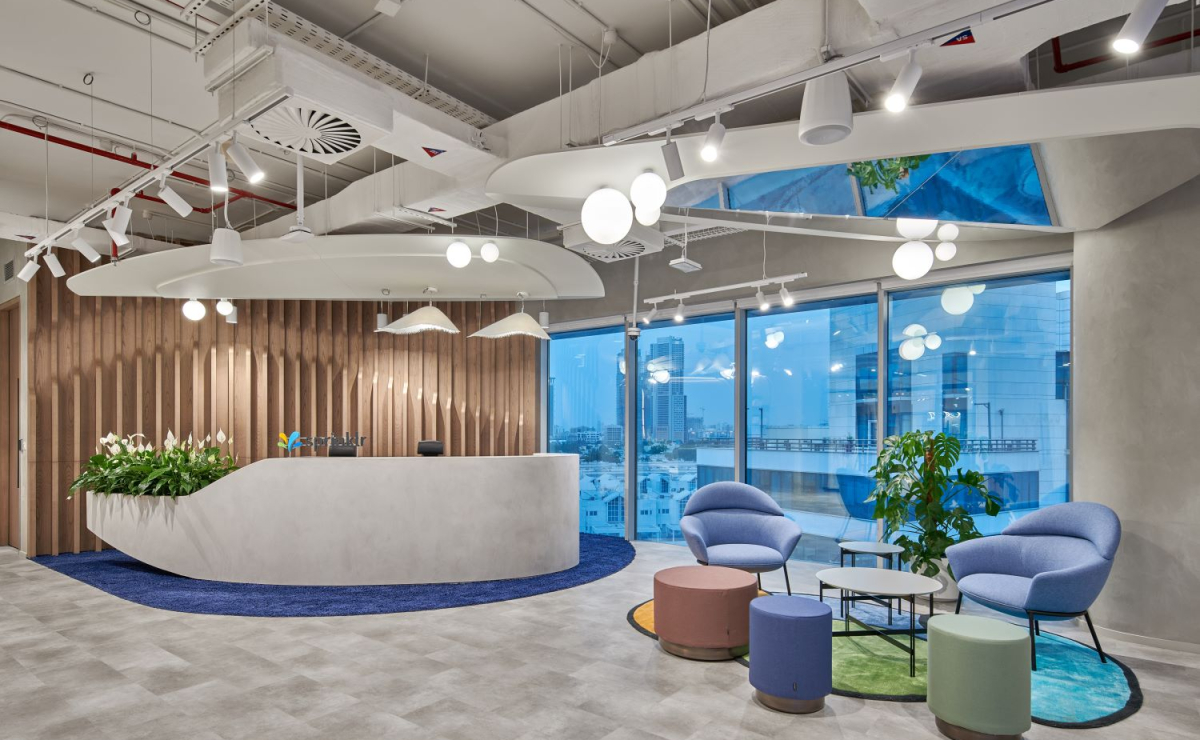
Summertown’s sustainable office fit out for Sprinklr was developed with biophilic elements.
Energy-Efficient Glazing and Insulation: Building Smarter for the UAE Climate
Material choices don’t just live on the inside of a fit out – they start at the envelope. LEED and Dubai Green Building Regulations place significant weight on thermal performance, daylighting, and operational energy use. That means glazing, insulation, and other envelope components are just as important as what’s underfoot or overhead.
Addressing Energy Demands from the Outside In
A building’s performance isn’t just about what happens inside – it starts with how well it keeps the outside out. In the UAE, that means controlling heat gain while preserving daylight and views. And the building envelope – especially glazing and insulation – is a critical line of defence in that regard.
Poor-quality glazing lets heat pour in, driving up HVAC loads and operational costs. Similarly, insufficient insulation allows cool air to escape, undermining even the best air conditioning systems. Both are energy inefficiencies that LEED and Dubai Green Building Regulations aim to minimise – and that savvy fit out contractors in Dubai address through sustainable office fit out solutions.
Glazing Systems That Deliver Performance and Comfort
Modern glazing systems can both reduce solar heat gain, and maintain excellent light transmission. For instance, Low-E coatings reflect infrared radiation, keeping interiors cooler; meanwhile, double- or triple-glazing adds thermal and acoustic insulation. These systems support not only comfort, but offer significant energy reductions in hot climates.
For LEED projects, high-spec glazing helps meet points under Optimise Energy Performance and contributes to daylighting strategies that reduce reliance on artificial lighting. In practice, they also contribute to more stable internal temperatures and improved user experience across open-plan and enclosed spaces alike.
Insulation That Supports Sustainability Goals
Insulation materials matter just as much – not just for performance, but for impact. Natural options like cellulose, ThermaCork, and wool insulation offer high thermal resistance with low embodied carbon. These are now viable alternatives to synthetic foam or fibreglass and are increasingly used in sustainable office fit outs aiming for LEED or WELL alignment.
In WELL-certified interiors, materials used within walls and floors must also meet air quality standards. Formaldehyde-free insulation or soundproofing panels, for instance, help improve the internal environment beyond temperature – contributing to better acoustics and less chemical exposure.
Together, the right glazing and insulation choices create workplaces that are cooler, quieter, and significantly more energy-efficient – essential for commercial fit out companies that aim to balance performance with sustainability.
Adaptable, Durable Systems: Designing for Longevity and Flexibility
Sustainability certifications don’t stop at air quality and sourcing – they also look at longevity. Materials that last longer and support flexibility help reduce lifecycle emissions, minimise waste, and allow businesses to evolve without ripping everything out. It’s a principle that’s becoming a key focus for fit out contractors across the UAE, so let’s dive deeper.
Future-Proofing Sustainable Office Fit Outs
No workplace stays static. Over time, teams expand, priorities shift, and space needs evolve. A truly sustainable office fit out isn’t just about the initial install – it’s about how well the space can adapt without being torn apart and rebuilt.
Adaptable systems like modular partitions, flexible power and data infrastructure, and moveable furnishings enable long-term change with minimal disruption. When embedded in the fit out from the outset, they reduce the need for future strip-outs – and the waste that comes with them.
Durability as a Sustainability Strategy
Durability may not sound exciting, but it’s one of the most powerful levers in reducing a fit out’s lifecycle footprint. High-wear surfaces like countertops, flooring, and joinery need to be able to take daily use without constant maintenance or early replacement. Materials like high-pressure laminates with recycled content, commercial-grade cork flooring, and scratch-resistant composite surfaces can extend service life dramatically.
In WELL and LEED frameworks, long-term performance is linked to responsible material use. Fit outs that need fewer replacements over time reduce embedded carbon and save clients money – a practical win for all parties.
Designing for Disassembly and Reuse
Circular economy principles are also driving a shift toward design for disassembly. Furniture and partitioning that can be taken apart without damage can be reused, resold, or reconfigured. This kind of thinking is embedded in the WELL Materials concept and LEED’s emphasis on Construction and Demolition Waste Management.
When materials are selected for resilience and adaptability, the benefits compound. Fit outs stay relevant for longer, clients reduce spend on future renovations, and waste is minimised. That’s sustainability not just in principle, but in practice – and it’s fast becoming a defining characteristic of the region’s best commercial fit out solutions.
[Embed video: Sprinklr Design and Build by Summertown Interiors]
Materials Matter in Sustainable Workplaces
When it comes to sustainability, materials are more than finishes – they’re the foundation. Every choice, from insulation to flooring to paint, shapes how the office looks, feels, and performs.
For fit out contractors in Dubai, the challenge is to bring technical rigour and creative insight to material selection – ensuring every product earns its place through performance, impact, and long-term value. Done well, this isn’t just design – it’s strategy.
Summertown Interiors continues to lead in this space. With 26 years of experience and a transparent JOURNEY2030 sustainability roadmap, we deliver commercial interiors that balance aesthetics, compliance, and wellbeing. Our LEED-certified projects – which include our own offices – demonstrate how intelligent material strategy builds lasting value.
In sustainable workplaces, materials matter – and the right partner does too. Get in touch with Summertown today to shape your sustainable office fit out from the ground up.

Nicola Trivett
General Manager & Sustainability Leader
